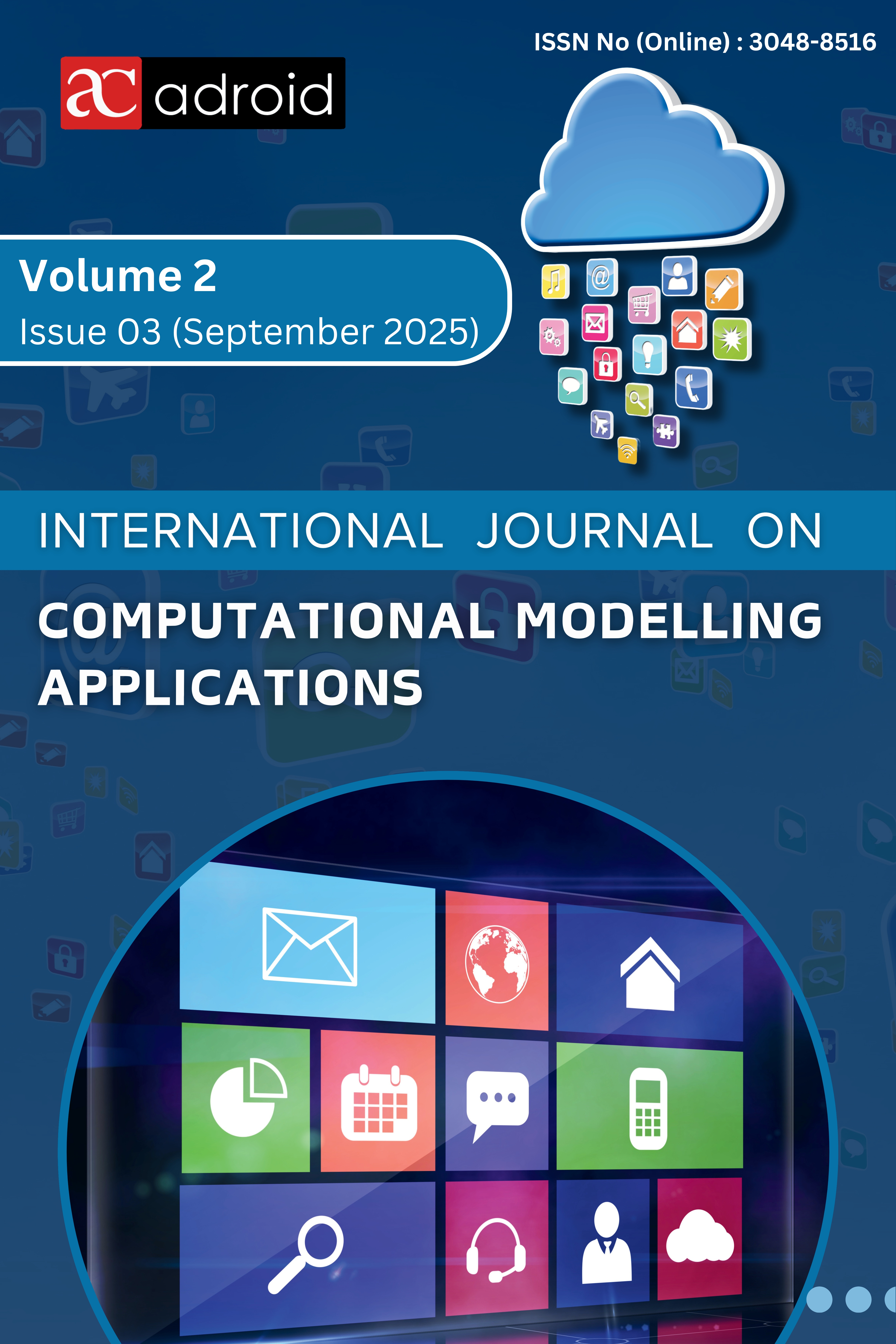Pattern Matching Algorithms for DNA Sequence Analysis and Disease Detection
DOI:
https://doi.org/10.63503/j.ijcma.2025.157Abstract
The focus of research in Genetics is upon analysis of massive amounts of information generated by various studies and research endeavours in the area. DNA sequence analysis paves way for understanding of factors responsible for diseases and leads to disease detection. Pattern matching algorithms have been explored for DNA sequence analysis and disease detection. In this study, some of the prominent pattern matching algorithms are comprehensively reviewed and presented as a potential technique for understanding and analysis of DNA sequences for disease detection.
References
[1] N.M. Luscombe, D. Greenbaum D and M. Gerstein, “What is bioinformatics? An Introduction and overview”, Yearbook of Medical Informatics, pp. 83-100.
[2] J. Pevsner, Bioinformatics and functional genomics, 3rd ed. John Wiley & Sons Inc, Chichester, 2015.
[3] G. Gambano, F. Anglani and A. D’Angelo, “Association studies of genetic polymorphisms and complex disease”, The Lancet (British edition), vol. 355, no. 9200, pp. 308-311, 2000.
[4] L.R. Cardon and J.I. Bell, “Association Study Designs for Complex Diseases”, Nature Reviews (Genetics), vol. 2, pp. 91-99, 2001.
[5] K. Lohmueller, C. Pearce, M. Pike et al., “Meta-analysis of genetic association studies supports a contribution of common variants to susceptibility to common disease”, Nature Genetics, vol. 33, pp. 177–182, 2003.
[6] T.A. Manolio, “Genomewide Association Studies and Assessment of the Risk of Disease”, The New England Journal of Medicine, vol. 363, no. 2, pp.166-176, 2010.
[7] J.A. Hollenbach, S.J. Mack, G. Thomson and P.A. Gourraud, “Analytical methods for disease association studies with immunogenetic data”, Methods in Molecular Biology, vol. 882, pp. 245-266, 2012.
[8] L. Alonso, I. Moran, C. Salvaro and D. Torrents D, “In Search of Complex Disease Risk through Genome Wide Association Studies”, Mathematics, vol. 9, no. 23, pp. 3083, 2021.
[9] E. Uffelmann, Q.Q. Huang, N.S. Munung et al., “Genome-wide association studies”, Nature Review Methods Primers, vol. 1, 59 , 2021.
[10] M. Shao, K. Chen, S. Zhang, M. Tian, Y. Shen, C. Cao and N. Gu, “Multiome-wide Association Studies: Novel Approaches for Understanding Diseases”, Genomics, Proteomics & Bioinformatics , vol. 22, qzae077 , 2024.
[11] L. Yang, M.C. Sadler and R.B. Altman, “Genetic association studies using disease liabilities from deep neural networks”, The American Journal of Human Genetics, vol. 112, no. 3, pp. 675-692, 2025.
[12] A.P. Gope and R.N. Behera, “A Novel Pattern Matching Algorithm in Genome Sequence Analysis”, International Journal of Computer Science and Information Technologies, vol. 5, no. 4, pp. 5450-5457, 2014.
[13] P.Neamatollahi, M. Hadi and M. Naghibzadeh, “Simple and Efficient Pattern Matching Algorithms for Biological Sequences”, IEEE Access, vol. 8, pp. 23838-2384, 2020.
[14] D. Altschuler, M.J. Daly and E.S. Lander, “Genetic Mapping in Human Disease”, Science, vol. 322, no.5903, pp. 881-888, 2008.
[15] E. D’Souza, B. Shalini Pai and S. Vijayakumar, “Comparative Analysis on Efficiency of Single String Pattern Matching Algorithms”, International Journal of Latest Trends in Engineering and Technology SACAIM, vol. 2016, pp.221-225, 2016.
[16] R.S. Boyer and J.S. Moore, “A Fast String Searching Algorithm”, Communications of the ACM , vol. 20, no.10, pp. 762-772,1977.
[17] R.M. Karp and M.O. Rabin, “Efficient randomized pattern-matching algorithms”, IBM Journal of Research and Development, vol. 31, no. 2, pp. 249-260, 1987.
[18] M. Shabaz and N. Kumari, “Advance-Rabin Karp Algorithm for String Matching”, International Journal of Current Research, vol. 9, no. 9, pp. 57572-57574, 2017.
[19] Sunita, R. Malik and M. Gulia M, “Rabin-Karp Algorithm with Hashing a String Matching tool”, International Journal of Advanced Research in Computer Science and Software, 2014.
[20] D.E. Knuth, J.H. Morris and V.R. Pratt, “Fast Pattern Matching in Strings”, SIAM Journal on Computing, vol. 6, no. 2, pp. 323-350, 1977.
[21] Ahmed, “The Role of Trie Data Structure in String Processing”, Research Project, Benha University, Shoubra, 2019.

